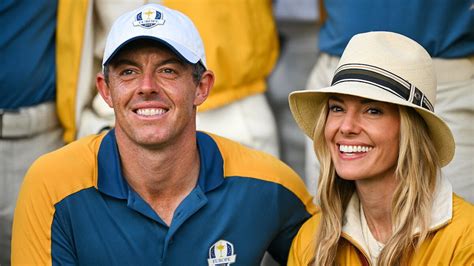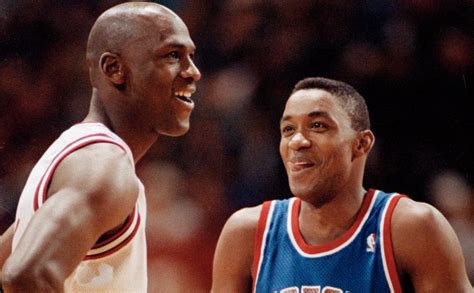
Rory McIlroy is navigating a challenging U.S. Open under intense scrutiny, as his wife, Erica Stoll, is notably absent amid swirling speculation about their impending divorce, leading the golfer to admit he’s living essentially “two lives.”
Pinehurst, NC – As Rory McIlroy competes at the U.S. Open, the focus extends beyond the golf course, with intense media attention surrounding his personal life, specifically his rumored divorce from his wife, Erica Stoll. Stoll’s absence from the tournament has amplified the speculation, casting a shadow over McIlroy’s performance and prompting him to acknowledge the complexities of balancing his professional and personal challenges.
McIlroy, currently contending for a coveted U.S. Open title, faces the additional pressure of managing personal turmoil. News of the divorce proceedings emerged just days before the tournament, adding a layer of complexity to his already demanding pursuit of a major championship. While McIlroy has attempted to maintain focus on his game, the media spotlight on his personal life has been unavoidable.
“I’m ready to play golf,” McIlroy stated tersely when initially questioned about the off-course drama. However, the persistent inquiries have elicited more revealing responses as the tournament progresses. McIlroy admitted to feeling the strain of living “two lives,” one as a world-class golfer in the public eye and the other as a man grappling with significant personal matters.
The divorce proceedings, reportedly initiated by Stoll, have remained largely private, with both parties refraining from making detailed public statements. This silence has fueled speculation and allowed rumors to proliferate, further intensifying the media scrutiny. Sources close to the couple suggest irreconcilable differences as the primary reason for the split, but official confirmation remains elusive.
McIlroy’s performance at the U.S. Open has been closely watched for any signs of the emotional toll. Despite the distractions, he has demonstrated remarkable resilience, remaining in contention and displaying glimpses of his renowned golfing prowess. However, moments of visible frustration have also punctuated his rounds, offering a glimpse into the mental and emotional battle he is waging both on and off the course.
The situation is further complicated by McIlroy’s history of navigating personal challenges under intense public pressure. His past relationship with tennis star Caroline Wozniacki ended abruptly shortly after wedding invitations were sent out, a highly publicized event that thrust him into the tabloid spotlight. This prior experience has likely contributed to his guarded approach to the current situation.
McIlroy’s team has attempted to shield him from excessive media intrusion, recognizing the potential impact on his performance. However, the intense interest in his personal life has made complete insulation impossible. McIlroy himself has acknowledged the challenges of compartmentalizing his emotions and maintaining focus amidst the distractions.
The impact of personal stress on athletic performance is well-documented, and McIlroy’s situation serves as a stark reminder of the human element in professional sports. While athletes are often perceived as superhuman performers, they are also individuals with personal lives and emotional vulnerabilities. The ability to manage these vulnerabilities under pressure is a critical component of success.
As McIlroy continues his quest for a U.S. Open title, the focus will remain on his ability to navigate the dual challenges of athletic competition and personal turmoil. Whether he can successfully compartmentalize these competing demands remains to be seen. The coming days will undoubtedly test his resilience, mental fortitude, and capacity to perform at the highest level under extraordinary circumstances.
Beyond the immediate impact on McIlroy’s career, the situation also raises broader questions about the intersection of celebrity, privacy, and the media’s role in reporting on personal matters. While public figures inevitably attract attention, the line between legitimate news and intrusive speculation can often become blurred. McIlroy’s experience serves as a case study in the complexities of navigating this landscape.
The U.S. Open continues, with McIlroy aiming to add another major championship to his impressive resume. However, the narrative surrounding his performance extends far beyond the fairways and greens, encompassing a story of personal challenge, public scrutiny, and the enduring human capacity to persevere in the face of adversity. How he handles the pressure, both on and off the course, will define this chapter of his career.
The pressures on athletes today are immense, with social media adding another layer of scrutiny. Every move, every word, is dissected and analyzed. McIlroy’s situation highlights the need for athletes to have strong support systems and mental health resources to navigate these challenges.
The world of professional golf is often perceived as glamorous and lucrative, but it also demands immense dedication, discipline, and mental toughness. McIlroy’s current predicament underscores the reality that even the most successful athletes are not immune to personal struggles. His ability to manage these struggles will ultimately determine his success, both in the short term at the U.S. Open and in the long term throughout his career.
The coming days will be crucial for McIlroy as he attempts to focus on his game and block out the external noise. Whether he can successfully compartmentalize his personal challenges and perform at his best remains to be seen. Regardless of the outcome, his experience serves as a reminder of the human side of professional sports and the importance of empathy and understanding in the face of personal adversity.
The story of Rory McIlroy at the U.S. Open is not just about golf; it’s about resilience, perseverance, and the human capacity to navigate challenges under intense pressure. It’s a story that will continue to unfold, both on and off the course, in the days and weeks to come. The world watches, not just as a fan of golf, but as a witness to a personal journey that transcends the sport itself.
McIlroy’s situation underscores the delicate balance between public persona and private life, a challenge faced by many high-profile individuals. The media’s role in covering such matters inevitably raises questions about ethical boundaries and the right to privacy. While the public has a legitimate interest in the lives of celebrities, the extent to which personal matters should be scrutinized remains a subject of ongoing debate. McIlroy’s experience serves as a reminder of the complexities of this dynamic.
The support McIlroy receives from his fans, fellow players, and his team will be crucial in helping him navigate this difficult time. The power of human connection and empathy can be significant in mitigating the impact of personal stress. McIlroy’s ability to draw strength from these sources will undoubtedly influence his performance both on and off the course.
The U.S. Open represents a significant opportunity for McIlroy to demonstrate his resilience and mental fortitude. A strong performance under these circumstances would not only add another major championship to his resume but also serve as a testament to his ability to overcome adversity. The world will be watching to see how he responds to this challenge.
Ultimately, Rory McIlroy’s story at the U.S. Open is a reminder that even the most successful individuals face personal struggles. His ability to navigate these struggles with grace and resilience will define his legacy, both as a golfer and as a human being. The coming days will be a test of his character and his capacity to persevere in the face of adversity.
The ongoing media coverage of McIlroy’s personal life serves as a reflection of society’s fascination with celebrity and the blurring of lines between public and private spheres. While the public has a legitimate interest in the lives of high-profile individuals, the extent to which personal matters are scrutinized remains a subject of ethical debate. McIlroy’s experience underscores the complexities of navigating this dynamic.
The pressure on athletes to perform at the highest level while simultaneously managing personal challenges is immense. McIlroy’s situation highlights the importance of mental health awareness and the need for athletes to have access to adequate support systems. The ability to prioritize mental well-being is crucial for long-term success and overall quality of life.
The U.S. Open provides a platform for McIlroy to showcase his resilience and determination. Regardless of the outcome, his ability to compete at the highest level under these circumstances is a testament to his character and his commitment to the sport. The world will be watching to see how he responds to this test of his mental and emotional fortitude.
In conclusion, Rory McIlroy’s U.S. Open journey is more than just a golf tournament; it’s a narrative of personal challenge, public scrutiny, and the enduring human capacity to persevere. His ability to navigate these complexities will define this chapter of his career and shape his legacy as a golfer and as a person.
The psychological toll of navigating personal difficulties in the public eye cannot be overstated. Athletes like McIlroy are often expected to perform at their peak regardless of their personal circumstances, placing immense pressure on their mental and emotional well-being. The availability of mental health resources and support systems is crucial for helping athletes cope with these challenges.
McIlroy’s experience serves as a reminder that success in professional sports is not solely determined by athletic ability. Mental fortitude, resilience, and the ability to manage pressure are equally important factors. His performance at the U.S. Open will be a testament to his ability to integrate these qualities and overcome adversity.
The media’s role in covering McIlroy’s personal life raises important questions about ethical journalism and the balance between public interest and individual privacy. While the public has a right to be informed, the line between legitimate news and intrusive speculation can often be blurred. McIlroy’s experience underscores the need for responsible reporting and a respect for personal boundaries.
The outpouring of support for McIlroy from fans, fellow players, and the golf community demonstrates the power of human connection in times of adversity. The ability to draw strength from these sources can be a significant factor in helping him navigate his personal challenges and maintain his focus on the sport.
Rory McIlroy’s U.S. Open journey is a story of resilience, perseverance, and the human spirit. His ability to overcome adversity and perform at the highest level is an inspiration to athletes and individuals alike. The world will be watching to see how he continues to navigate these challenges and shape his legacy.
The situation also shines a light on the unique challenges faced by athletes in the digital age. Social media amplifies both the support and the criticism, making it even more difficult to maintain focus and manage personal issues. McIlroy’s ability to navigate this complex landscape is a testament to his mental fortitude and resilience.
The support that McIlroy receives from his inner circle, including his family, friends, and team, is crucial during this difficult time. Having a strong support system can provide a sense of stability and help him maintain perspective amidst the turmoil. The importance of these relationships cannot be overstated.
McIlroy’s performance at the U.S. Open will be closely scrutinized, but it’s important to remember that he is also a human being with personal challenges. Empathy and understanding are essential in assessing his performance and appreciating the difficulties he faces both on and off the course.
Ultimately, Rory McIlroy’s story at the U.S. Open is a reminder that life is full of challenges, and it’s how we respond to those challenges that defines us. His ability to persevere, maintain his focus, and continue to compete at the highest level is a testament to his character and his commitment to the sport. The world will be watching to see how he navigates this difficult chapter and continues to shape his legacy.
The focus on McIlroy’s personal life also raises questions about the expectations placed on public figures. While they are often admired and celebrated for their achievements, they are also subject to intense scrutiny and judgment. McIlroy’s experience underscores the need for a more nuanced and compassionate understanding of the challenges faced by those in the public eye.
The mental fortitude required to compete at the highest level of professional sports is immense, and McIlroy’s current situation only adds to the pressure. His ability to manage stress, maintain focus, and block out distractions will be crucial in determining his success at the U.S. Open and beyond.
The outpouring of support for McIlroy from fans and the golf community is a testament to his popularity and the respect he has earned throughout his career. This support can be a significant source of strength and motivation as he navigates his personal challenges and strives to achieve his goals.
Rory McIlroy’s U.S. Open journey is a compelling narrative of personal challenge, public scrutiny, and the enduring human capacity to persevere. His ability to navigate these complexities will shape his legacy as a golfer and as a person, and the world will be watching to see how he continues to overcome adversity and inspire others.
Frequently Asked Questions (FAQ)
1. Why is Rory McIlroy’s wife, Erica Stoll, absent from the U.S. Open?
Erica Stoll’s absence from the U.S. Open is attributed to ongoing divorce proceedings between her and Rory McIlroy. News of the impending divorce surfaced shortly before the tournament, leading to speculation that the personal turmoil is affecting her decision not to attend. While no official statement has been released confirming the specific reasons for her absence, the timing coincides with the widely reported divorce news.
2. How has Rory McIlroy addressed the divorce speculation?
McIlroy has acknowledged the difficulties of balancing his personal life with his professional career, admitting he’s living “two lives.” While initially guarded about the situation, he has alluded to the challenges he faces amidst the media scrutiny. He has tried to maintain his focus on the tournament, but the persistent questions about his personal life have made it difficult to completely compartmentalize his emotions.
3. What is the impact of the divorce proceedings on McIlroy’s performance at the U.S. Open?
The impact of the divorce proceedings on McIlroy’s performance is difficult to quantify precisely, but the situation undoubtedly adds pressure. The stress of managing personal matters under intense public scrutiny can take a toll on an athlete’s mental and emotional state, potentially affecting their concentration and performance. While McIlroy has shown resilience, moments of visible frustration suggest he is feeling the strain.
4. What are the reported reasons for the divorce between Rory McIlroy and Erica Stoll?
While neither Rory McIlroy nor Erica Stoll have publicly stated the specific reasons for their divorce, sources close to the couple have suggested “irreconcilable differences” as the primary cause. Due to the private nature of the proceedings, details are scarce, and much of the information remains speculative. Both parties have refrained from making detailed public statements, contributing to the ambiguity surrounding the split.
5. How has the media covered Rory McIlroy’s personal situation during the U.S. Open?
The media coverage of Rory McIlroy’s personal situation during the U.S. Open has been extensive, reflecting the high level of public interest in his personal life. News outlets have reported on the divorce proceedings, Stoll’s absence, and McIlroy’s reactions to questions about his personal life. The coverage has sparked debate about the balance between legitimate news reporting and intrusive speculation, highlighting the challenges of navigating the intersection of celebrity, privacy, and the media.









